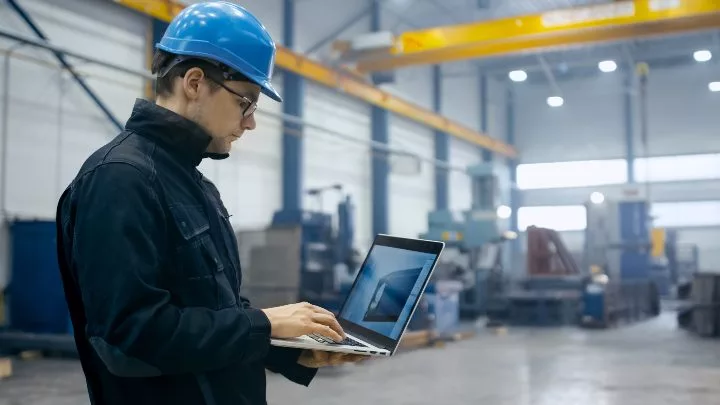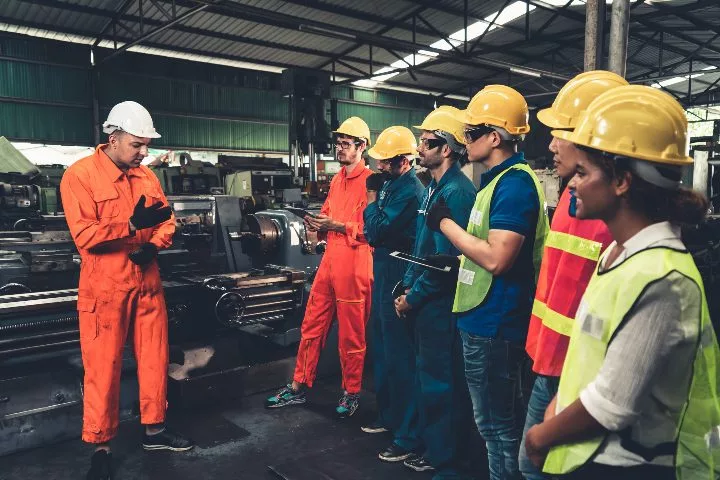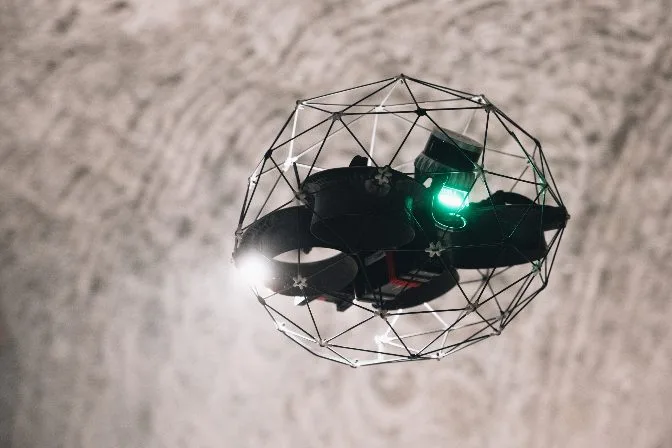What Is Maintenance Management?
Maintenance management is a structured approach to maintaining and protecting a company’s physical assets and resources. It involves a range of processes aimed at ensuring that equipment, facilities, and infrastructure remain in optimal working condition. By implementing effective maintenance strategies, businesses can enhance operational efficiency, reduce costs, and improve safety across all levels.
Through the use of maintenance management systems, companies can track equipment performance, manage labor, coordinate with contractors, and monitor associated costs. These systems not only help in reducing repair and inspection expenses but also ensure that both employees and machinery operate safely, efficiently, and productively.

Maintenance management software plays a crucial role in minimizing equipment failure and production downtime. It also helps in scheduling and tracking preventive maintenance tasks, which are essential for long-term asset reliability. Whether it's a manufacturing plant, a hospital, or a transportation hub, these systems are vital for sustaining operations and preventing costly disruptions.
Although maintenance practices may vary across industries, the core objective remains the same: to optimize resource usage and ensure that physical assets are always available when needed. Today, this is achieved through a combination of manual procedures, advanced technologies, and integrated software solutions that work together to maximize efficiency and productivity.
Why Is Maintenance Management Important?
For individuals outside the maintenance industry, equipment failure might just be an inconvenience—like a delayed train or a power outage. However, for large corporations, unplanned equipment failure can lead to severe financial losses and even endanger lives.
According to research by Aberdeen Strategy and Research, unplanned equipment downtime can cost a company up to $260,000 per hour in lost revenue. This highlights the critical importance of maintenance management systems in preventing such costly disruptions. Industries like transportation, IT, energy, healthcare, and more rely heavily on these systems to maintain operational continuity and avoid significant financial setbacks.

Maintenance management is not just about saving money—it also ensures compliance with industry regulations, improves workplace safety, and extends the lifespan of equipment. In sectors where equipment malfunction could lead to serious accidents or injuries, proper maintenance is not just a best practice; it's a necessity.
Here are five key reasons why maintenance management is so important:
1. It Minimizes Equipment Downtime
One of the most significant benefits of maintenance management is its ability to reduce unplanned equipment downtime. With the right tools and strategies, companies can plan maintenance activities during off-hours or low-demand periods, minimizing disruptions to daily operations. This proactive approach saves time, reduces costs, and ensures that equipment is always ready when needed.
2. It Maximizes Equipment Lifespan
Regular maintenance helps extend the life of machinery and equipment. By following scheduled inspections and upkeep routines, companies can prevent premature wear and tear, reducing the need for frequent replacements. This not only saves money but also supports sustainability efforts by reducing waste and resource consumption.
3. It Increases Productivity
When equipment runs smoothly, employees can focus on their core responsibilities instead of dealing with maintenance issues. Effective maintenance management allows teams to shift from reactive repairs to proactive planning, leading to higher efficiency and better overall performance. It also reduces stress and improves job satisfaction among workers.
4. It Helps With Regulatory Compliance
Many industries have strict regulations regarding equipment safety, environmental standards, and operational protocols. A robust maintenance management system ensures that all necessary inspections and documentation are properly recorded and maintained. This helps companies stay compliant and avoid legal penalties or fines.
5. It Saves Lives
In high-risk industries like construction, energy, and healthcare, faulty equipment can lead to serious injuries or even fatalities. Proper maintenance management not only prevents accidents but also ensures that safety protocols are followed. This makes the workplace safer for everyone involved and protects both human lives and company reputation.
Types of Maintenance Management
There are several types of maintenance management approaches, each suited to different needs and environments. Here are five common types, ranging from simple to complex:

1. Run-To-Failure Maintenance
This is the simplest form of maintenance, where equipment is used until it breaks down before being repaired or replaced. While this method is low-cost in the short term, it often leads to higher long-term expenses due to unexpected failures and downtime.
2. Time-Based Maintenance
Time-based maintenance involves scheduling regular inspections and maintenance tasks based on a fixed calendar. This approach helps catch potential issues early, but it may not always be the most efficient solution for all types of equipment.
3. Condition-Based Maintenance
Condition-based maintenance uses sensors and monitoring systems to assess the real-time condition of equipment. This allows for timely interventions based on actual performance rather than arbitrary schedules, making it more efficient and cost-effective.
4. Predictive Maintenance
Predictive maintenance goes a step further by using data analytics and machine learning to forecast when equipment might fail. This enables companies to take preventive action before a breakdown occurs, reducing downtime and maintenance costs.
5. Prescriptive Maintenance
Prescriptive maintenance is the most advanced type, offering not only predictions but also recommended actions to address potential issues. This level of automation helps technicians make informed decisions quickly, improving overall efficiency and reducing risks.
While some maintenance tasks may need to be deferred due to limited resources, prioritizing urgent needs ensures that the most critical systems remain operational at all times.
Maintenance Inspections
Maintenance inspections are a fundamental part of any maintenance management system. Whether conducted manually or with the help of drones and other technology, these inspections ensure that equipment and facilities are safe, functional, and operating at peak performance.

There are several types of maintenance inspections, including:
1. Safety Inspections
Safety inspections are designed to identify potential hazards and ensure that all operations comply with safety standards. They cover everything from checking first-aid kits to inspecting fall protection systems and emergency exits.
2. Failure Finding Inspections
These inspections test backup systems and emergency protocols to ensure that they function correctly in case of equipment failure. They are essential for maintaining operational continuity during unexpected events.
3. Building Interior Inspections
Interior inspections involve checking for signs of wear and tear inside buildings, such as damaged walls, faulty electrical systems, or plumbing issues. These inspections help maintain a safe and comfortable environment for occupants.
4. Building Exterior Inspections
Exterior inspections focus on assessing the condition of a building’s exterior, including roofs, windows, doors, and walkways. They help identify structural issues and ensure that the building remains secure and functional.
Drones and Maintenance Inspections
With the rise of drone technology, many industries are now using unmanned aerial vehicles (UAVs) for maintenance inspections. Drones offer a safer, faster, and more efficient way to inspect hard-to-reach areas, reducing the risk of injury and improving data accuracy.
For example, the Elios 3 drone is equipped with LiDAR technology, allowing it to create detailed 3D maps of confined spaces. This capability makes it ideal for inspecting industrial equipment, pipelines, and other complex structures without putting human inspectors at risk.
 The Elios 3
The Elios 3
Using drones for inspections not only enhances safety but also provides valuable insights that can inform future maintenance strategies. As drone technology continues to evolve, its role in maintenance management will only become more significant.
[Case study: Elios 3's 3D Mapping Helps City of Lausanne in Water Department Inspections]
Examples of Maintenance Management
Maintenance management is widely used across various industries, helping organizations improve efficiency, reduce costs, and ensure safety. Here are a few examples of how it works in practice:
1. Maintenance Management in Restaurants
Restaurants rely heavily on kitchen equipment such as ovens, fryers, and refrigerators. Proper maintenance ensures that these appliances function reliably, avoiding service disruptions and health code violations. One McDonald’s franchise owner reported a significant improvement in maintenance efficiency after implementing a computerized maintenance management system (CMMS), cutting repair times and reducing equipment downtime by nearly 50%.
2. Maintenance Management in Construction
In the construction industry, equipment failure can cause major delays and financial losses. A well-implemented maintenance management system helps ensure that all machinery operates safely and efficiently, while also accounting for environmental factors and worker safety. This level of oversight is crucial for meeting project deadlines and maintaining quality standards.
3. Maintenance Management in Hospitality
Hotels and resorts must manage a wide range of maintenance requests, from plumbing issues to elevator malfunctions. A CMMS helps streamline these processes, improving response times and enhancing guest satisfaction. One hotel chain saw a dramatic increase in productivity after adopting a digital maintenance management system, eliminating lost requests and improving communication between staff and guests.
Other Examples of Maintenance Management
Maintenance management is not limited to these industries. It is also used in manufacturing, healthcare, energy, and many other sectors. From food processing plants to hospitals, the principles of maintenance management apply universally, helping organizations maintain operational excellence and protect their investments.
Maintenance Management Software
There are numerous maintenance management software solutions available, each tailored to specific industries and business needs. Choosing the right one can significantly impact a company’s efficiency, cost savings, and overall performance.

1. UpKeep
UpKeep offers a comprehensive suite of tools for managing maintenance tasks, from document management to automated preventative maintenance. It is particularly popular among gyms, restaurants, and government buildings. Companies like Marriott and McDonald’s use UpKeep to streamline their maintenance operations.
2. Aptean
Aptean provides enterprise asset management (EAM) and overall equipment effectiveness (OEE) software, tailored for industries such as healthcare, energy, and logistics. Their solutions are known for seamless integration with existing enterprise systems, making them a great choice for large-scale operations.
3. ValueKeep
ValueKeep focuses on reducing paperwork, improving asset uptime, and increasing productivity. It is ideal for businesses in agriculture, construction, and healthcare. The platform offers customizable features, including inventory management and real-time notifications.
4. Limble
Limble is a user-friendly CMMS that simplifies work order management and reporting. It is especially useful for small to mid-sized businesses in the food and beverage and hospitality industries. Its intuitive interface and multilingual support make it a versatile option for global teams.
5. FMX
FMX offers a range of maintenance management solutions tailored for schools, zoos, and nonprofit organizations. It helps reduce budget gaps and streamline workflows, making it a practical choice for institutions with limited resources.
Maintenance Manager Jobs
If you're considering a career in maintenance management, you'll find a variety of roles across different industries, including healthcare, manufacturing, and construction. Each position has unique responsibilities, but there are common duties that most maintenance managers share.

Maintenance managers are responsible for managing budgets, overseeing regulatory compliance, coordinating with contractors, and reporting on maintenance progress. These roles require a mix of technical knowledge, leadership skills, and strong organizational abilities.
Maintenance Manager Salary
The average annual salary for a maintenance manager is around $80,000 USD, though this can vary depending on location, industry, and experience. Entry-level positions may start at around $55,000, while experienced professionals can earn over $100,000 annually.
Salaries tend to be higher in states like New York, Minnesota, and Louisiana, while lower in western states such as Idaho and Utah. As demand for skilled maintenance managers continues to grow, so too will opportunities for career advancement and competitive compensation.
Precision Annealed Seamless Steel Pipe
Precision Annealed Seamless Steel Pipe,Annealed Stainless Tubing,Precision Annealed Seamless Steel Pipe Bollards,Precision Annealed Seamless Steel Pipe And Fittings
Shandong Jianlong Special Steel Co., Ltd. , https://www.jianlongsteelpipe.com